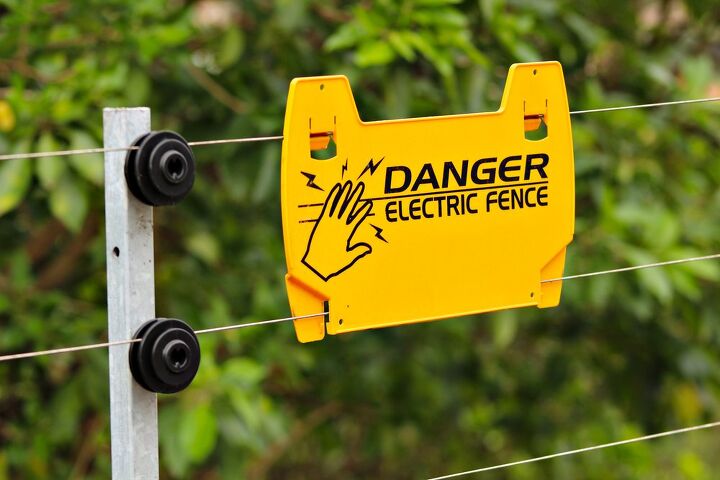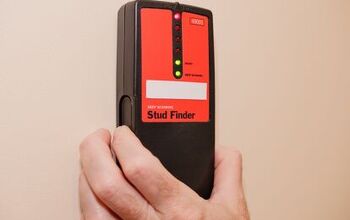Electric Fence Not Working? (Possible Causes & Fixes)

An electric fence is an effective way to deter animals and people from crossing a boundary. But just as with any electrical item, it’s possible to run into issues with your electric fence. So if your electric fence isn’t working, how can you figure out what went wrong?
If your electric fence isn’t working, there are a few main issues that could be causing it. These are the power source, the terminals, the ground system, the hook-up wire, and the length of the fence. In most cases, it’s possible to troubleshoot and diagnose any issues with your electric fence yourself.
When troubleshooting and repairing your electric fence, always exercise caution. The shock you may receive from an electric fence isn’t likely to cause significant injuries. Still, it’s always better to be safe than sorry.
Do You Need Fence Installation or Repair Services?
Get free, zero-commitment quotes from pro contractors near you.

What Could Be Wrong With Your Electric Fence?
There are five main reasons why your electric fence may not be working. In most cases, you should be able to fix your electric fence without having to call a professional. Always wear rubber boots and insulated gloves while troubleshooting and repairing your electric fence.
The following five tests are meant to be performed in order. If you test for power issues and don’t find the problem, then you should move on to testing the terminals, and so on.
1. Power Issues
Start by checking for any issues with the batteries or power. Here’s how you can determine whether the problem is coming from your power source.
How To Check OutletsA simple way to make sure the outlet is working is to plug another electrical device into the outlet. It’s common to use a lamp or other light to see if it powers up properly. If it doesn’t, contact an electrician to figure out why the outlet isn’t delivering power.
How To Check Solar ChargersIf your electric fence is powered by solar chargers, measure your battery voltage with a voltage tester. It may need to be replaced if it’s underperforming. 12-volt batteries should test at 12 volts, while 6-volt chargers should test at 6 volts.
It’s recommended to replace your batteries every three years. There’s a chance that even if it hasn’t yet been three years, your battery still isn’t performing well. If this occurs, it’s possible that your battery lost its charge due to extended time with minimal or no sunlight.
How To Check BatteriesIf you use a battery-operated DC fence charger to power your electric fence, check your battery. If it’s not delivering enough of a charge, it’s possible it’s been drained by a short. Keep in mind that if animals frequently test the fence, that can also drain the battery.
Before you reconnect the battery, be sure to check for shorts along the length of the fence.
2. Problems With Terminals
Your electric fence’s terminals are the posts that attach the hook-up wires to the energizer. You can test the terminals to figure out whether the energizer is outputting enough energy.
Step 1: Turn Off PowerThe first step is to turn off the power to the energizer.
Step 2: Disconnect Hook-Up WiresNext, disconnect each of the two hook-up wires from the charger.
Step 3: Turn On PowerNow it’s time to turn the power to your energizer back on.
Step 4: Check The VoltageUse a voltage tester to check the output. If it’s under 2000 volts, then there’s a problem with the energizer. Generally, it’s more cost-effective and timely to replace an energizer than to repair it.
If your energizer is putting out a voltage of over 2000 volts, then it is operating properly.
3. Inadequate Ground System
Many poorly performing electric fences are the result of inadequate ground systems.
Step 1: Check Ground RodsIt may be the case that you don’t have sufficient ground rods for your electric fence. It’s recommended that every system have a minimum of three ground rods. If you don’t have at least three ground rods, that could be the reason your fence isn’t performing properly.
Step 2: Check SoilIf your electric fence has been installed in rocky, dry, or sandy soil, then you’ll need more than three ground rods. In addition, if you live in a cooler climate, you’ll also want to check whether the soil is frozen. If so, it could interfere with your fence’s operation as well.
Step 3: Turn On PowerConnect your ground hook-up wires to your electric fence and turn the power on.
Step 4: Check VoltageUse a voltmeter to check the ground wire’s voltage. If the voltage is lower than 400 volts, your electric fence system is grounded properly. If it is higher than 400 volts, that means your ground rod is leaking too much voltage.
In this case, you’ll need to either make the ground rods deeper or install additional ground rods. After you’ve done so, test the ground wire’s voltage again to be sure the problem has been resolved. Get an idea of how much electric meter installation costs.
4. Issues With Hook-Up Wire
The line that connects your energizer’s positive terminal to your electric fence is the hook-up wire. There is also a second hook-up wire that runs from your energizer’s negative terminal to your first ground rod. For both of these wires, conductivity needs to be fully established.
Step 1: Turn Off PowerThe first thing you’ll need to do to check your hook-up wires is to turn off the power to the charger.
Step 2: Check ConnectionsCheck both the positive-to-fence connection and the negative-to-rod connection. Make sure both are securely attached.
If any of the connections have come loose, reattach them and turn the power back on. If the electric fence still isn’t working, then disconnect the hook-up line from the fence. Leave it connected to the terminal, and keep the ground rod hook-up attached.
Step 3: Check VoltageTurn the power on and use a voltmeter to read the output of the hook-up wire that’s usually attached to the fence. If the voltage is more than 1500 volts, then the hook-up wire isn’t the issue. You can reconnect it to the fence.
However, if the reading is less than 1500 volts, that means the hook-up wire is grounding itself in some way. At this point, make sure that you’re using a 20 KV insulated wire. Turn off the power, replace the wire, and check your reading again.
5. Fence Problems
Once you’ve gone through all of the previous tests, you’ll need to look at the entire length of your fence. There are several ways to hide an electrical box in the front yard.
Step 1: Turn On PowerStart by turning on the power to the fence.
Step 2: TestWalk the length of your fence and test your line every 100 feet or so. You’ll likely run into an area where you get a low reading or no reading at all.
When this happens, back up about 50 feet and test your line again. This will help you determine where the drop starts.
Note that the longer your fence is, the larger voltage drop you should expect at the farthest parts of your fence. You may realize that your fence is lengthy enough that it results in too large of a voltage drop.
In this case, it’s wise to set up a second fence that is fueled by another charger. Another option is to purchase a more powerful charger for the existing fence.
If, after completing all of the tests, you’re still not sure what the problem is, it’s best to contact a professional.
Do You Need Fence Installation or Repair Services?
Get free, zero-commitment quotes from pro contractors near you.

Related Questions
Are electric fences legal?
Whether or not an electric fence is legal depends on its location. In almost every state, fencing must be completely on your property. It can’t exist on any public road or fence line.
Unless the electric fence runs along a highway or frontage road, it will usually be allowed in most rural areas.
Are electric fences dangerous?
There are very few human deaths associated with electric fences, but they still come with a risk. Generally, the shock you’ll get from touching an electric fence is only dangerous if it continues for minutes or hours. Injuries and death can occur if someone gets trapped in the fence.
Falling unconscious while in contact with the fence is also very dangerous. The risk of getting seriously injured grows if your head or neck comes into contact with an electrified wire.
Always exercise caution around a live electric fence. Provide adequate warning signs for any part of the fence where there is public access. Children, the elderly, and those with heart conditions should avoid touching electric fences at all costs.
Are electric fences safe for cats?
Generally, an electric fence will not kill a cat. In most cases, cats are able to sense the electrostatic energy given off by the fence, and they avoid it. However, this doesn’t mean it’s safe to use electric fences around cats.
Although cats nearly always shy away from electric fences, any shock can cause major problems. If a cat receives a shock from an electric fence, it could have a heart attack or even die.

With a lifelong passion for writing plus strong enthusiasm for home improvement and DIY projects, joining the team at Upgraded Home was an easy choice. Jessica Allen likes to share helpful information with current and aspiring homeowners. Aside from writing, Jessica loves doing yoga, playing the piano, and dabbling in graphic design.
More by Jessica Allen


















![Standard Dining Room Table Dimensions [for 4, 6, 8, 10 and 12 People]](https://cdn-fastly.upgradedhome.com/media/2023/07/31/9074335/standard-dining-room-table-dimensions-for-4-6-8-10-and-12-people.jpg?size=350x220)








